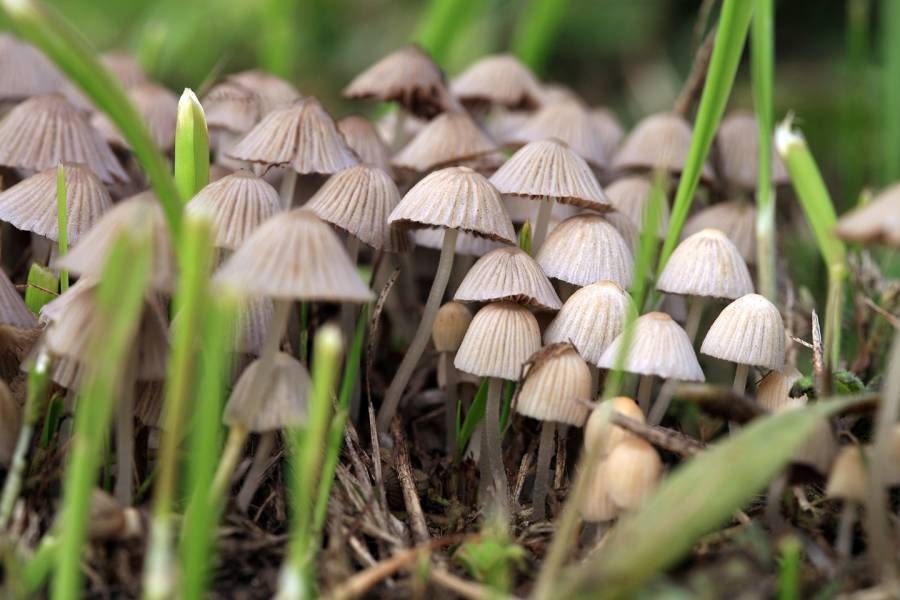Edibles have gained popularity as a creative and flavorful way to consume cannabis. While common culinary mushrooms are often used in edibles, there is a subset of adventurous individuals who have experimented with incorporating Amanita mushrooms into their edible creations. Amanita mushrooms, also known as fly agaric or Amanita muscaria, possess psychoactive properties and have historical significance in various cultural traditions. This article will explore the practice of using Amanita mushrooms as edibles, discussing the potential risks, proper preparation methods, dosage considerations, and responsible consumption. Through valuable insights, this article aims to provide a comprehensive guide for those interested in exploring the use of Amanita mushrooms in edibles. For those looking to embark on a culinary journey with Amanita mushroom-infused gummies, websites like https://herb.co/products/edibles/galaxy-treats-mango-amanita-mushroom-gummies/ offer an enticing option to explore this unique and adventurous culinary experience.
Historical Significance and Psychoactive Properties
Amanita mushrooms have a rich history and hold cultural significance in various traditions. They contain psychoactive compounds such as muscimol and ibotenic acid, which can induce hallucinogenic effects when consumed. However, it is important to note that the psychoactive properties of Amanita mushrooms can vary, making it essential to approach their use with caution.
Proper Preparation By Reducing Toxins and Potency
To make Amanita mushrooms suitable for consumption, proper preparation methods are necessary. This typically involves drying and heating the mushrooms to convert the ibotenic acid into muscimol, a milder compound. Proper preparation helps reduce potential toxins and decreases the potency of the psychoactive effects.
Dosage Consideration So Start Low and Go Slow
When using Amanita mushrooms as edibles, dosage is of utmost importance. Beginners should start with extremely small amounts and gradually increase if desired. This cautious approach allows individuals to gauge their tolerance levels and ensure a safe and enjoyable experience. It is crucial to understand that the effects of Amanita mushrooms can vary widely among individuals.
Pairing Flavors To Enhance the Culinary Experience
Amanita mushrooms possess a distinct earthy and nutty flavor profile. When incorporating them into edibles, it is important to consider complementary flavors that can enhance the overall taste experience. Aromatic spices, herbs, or natural sweeteners can be used to balance and harmonize the unique flavor of Amanita mushrooms.
Responsible Consumption By Education and Awareness
Responsible consumption is paramount when using Amanita mushrooms as edibles. Education and awareness about the potential risks, proper dosage, and local regulations are crucial. It is recommended to seek guidance from experienced foragers or mycologists to ensure accurate identification and safe usage of Amanita mushrooms.
Risk Mitigation Using Precautions and Expert Advice
To mitigate the potential risks associated with using Amanita mushrooms as edibles, several precautions should be taken. This includes proper identification of Amanita mushroom species, consulting experts for guidance, and following safe preparation techniques. Understanding the distinction between edible and toxic mushrooms is essential to ensure a safe culinary experience.
Cultural and Historical Significance:
Amanita mushrooms hold cultural and historical significance in different parts of the world. They have been used ceremonially and spiritually in certain cultures for their perceived mystical properties and connection to nature. Exploring the use of Amanita mushrooms in edibles can provide an opportunity to learn about and appreciate the cultural heritage associated with these mushrooms.
Artistic Expression and Culinary Innovation:
Incorporating Amanita mushrooms into edibles allows for artistic expression and culinary innovation. The unique appearance and flavor of Amanita mushrooms can inspire creativity in the kitchen, encouraging individuals to experiment with new recipes and presentation techniques. The process of crafting Amanita mushroom-infused edibles can be seen as an art form, blending the worlds of culinary expertise and psychedelic exploration.
Conclusion:
Using Amanita mushrooms as edibles can be an adventurous and unique culinary exploration. However, it is crucial to approach their use with caution and responsibility. Understanding the historical significance, psychoactive properties, proper preparation methods, dosage considerations, and responsible consumption practices are key to a safe and enjoyable experience. Seek expert advice, prioritize personal well-being, and adhere to legal regulations when considering the use of Amanita mushrooms as edibles. With careful attention and respect for the potential risks, individuals can embark on a culinary journey that combines creativity, exploration, and responsible consumption.

Comments are closed.